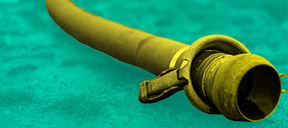Funding failure: Most of Ireland's biodiversity spend goes on schemes that have little impact
Ireland’s overall spending on biodiversity protection is also under internationally-accepted levels.

IRELAND IS NOT spending enough on protecting our under-threat biodiversity – and the majority of what we are spending is going on schemes that are failing to have an impact.
In part one of this Noteworthy investigation into the state of Ireland’s biodiversity, we found that the natural world remains significantly impacted by the human hand through habitat loss, degradation, overexploitation, pollution, and climate change.
So what is the State doing to ensure funding and resources are in place to turn the tide on biodiversity loss here in a meaningful way?
Noteworthy has found that:
- Ireland is spending well below internationally-accepted levels on biodiversity protection.
- The vast majority of spending goes to agri-environmental schemes that experts, the State and the EU Court of Auditors have all said are failing to tackle biodiversity loss.
- Experts behind a groundbreaking 2020 study of biodiversity financing in Ireland are concerned that the key agencies charged with biodiversity protection are under-funded and under-staffed to fulfil their remits.
- Natural capital accounting is still not mainstreamed across government making it difficult to account for ecosystem services from our natural resources.
—
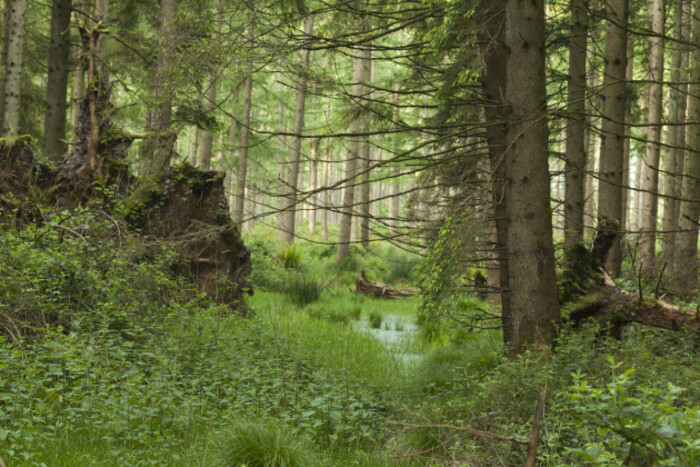 Russelstown wood beside the Poulaphouca Reservoir SPA in Co Wicklow
Russelstown wood beside the Poulaphouca Reservoir SPA in Co Wicklow
Sizeable resource gap
Since the late-2000s, international organisations and researchers have identified inadequate finance as a major reason for the failure to halt the decline in biodiversity.
Globally, it is estimated that between €78 and 91 billion is spent on biodiversity finance every year. At face value, this appears to be an exorbitant amount of money.
Yet, a look at the spending on supports which are potentially harmful to biodiversity – estimated by the OECD at €500 billion per year – puts this figure into perspective.
This global trend is seen in Ireland too. Since the Central Statistics Office (CSO) started closely tracking environmental supports in 2010, €8 billion has been paid out on those measures, compared to over €20.5 billion in fossil fuel subsidies, much of which goes to sectors that are known to have negative environmental impacts.
A review of global biodiversity financing by the OECD last year found that there are also significant gaps in information on biodiversity spending, warning that up-to-date and accurate estimates are “needed to establish a baseline from which governments and other stakeholders can track biodiversity finance trends over time”.
Prior to 2010, there was no obligation on governments to monitor biodiversity-related expenditure so, to bridge this gap, the UN introduced a new requirement that all parties to the UN Convention on Biological Diversity (CBD) report on biodiversity expenditure.
A new CBD strategy to monitor finance for biodiversity is, for the first time, driving efforts to change this dynamic by accurately tracking finance for conservation through National Biodiversity Expenditure Reviews (NBERs).
Difficulties in monitoring finances
According to a 2021 paper from UCD and the National Parks and Wildlife Service (NPWS), these reviews have the potential to “introduce a blueprint for national biodiversity governance”.
In Ireland, researchers from UCD, with support from the NPWS, have started to track biodiversity-related expenditure, with a 2018 report showing, for the first time, a detailed and comprehensive picture of the landscape of biodiversity finance in Ireland.
And the findings were stark, revealing a sharp decline in the resources available for biodiversity conservation since the economic crash in the late 2000s.
The Irish review found that both direct and indirect spending on biodiversity conservation was €1.49 billion between 2010 and 2015, with overall spending declining by 31% during this six-year study period.
On average, according to the expenditure review, Ireland spent €250 million per year on biodiversity or 0.13% of GDP, well short of the 0.3% of GDP recommended for OECD countries by the International Union for Conservation of Nature.
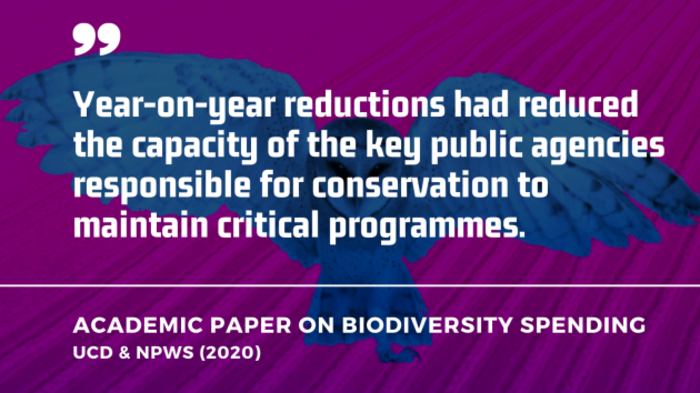
Farming and biodiversity interlinked
Some 80% was spent on agri-environmental subsidies, the review found, with €1.1 billion, or 75%, of all funding over the six-year window examined sourced from the Department of Agriculture.
These findings were backed up by a review of finance arrangements for biodiversity conservation in Ireland released last year that found 75% of funding over a seven-year window between 2014 and 2020 went to agricultural schemes.
The majority of this went to GLAS, an agri-environmental payment scheme that the State’s most recent audit found has had a modest climate and biodiversity impact that is outweighed by agricultural expansion.
According to a co-author of both UCD reports on biodiversity funding, environmental economist Dr Craig Bullock, it is not surprising that there is a large funding pot for these schemes as “farming has tremendous influence on whatever goes on in relation to trends in biodiversity” in Ireland.
Much of our protected landscape is fragmented - compared to 41 other European states, we have the 5th lowest connectedness score across the bloc – and much of our biodiversity is found outside of protected nature areas in farmland and rural landscapes.
The problem, Bullock said, is that “we’re not really achieving the biodiversity outcomes” as evaluations of GLAS and its predecessor schemes show that any positive on-farm changes are “rather peripheral” against a background of “continued intensification of farming”.
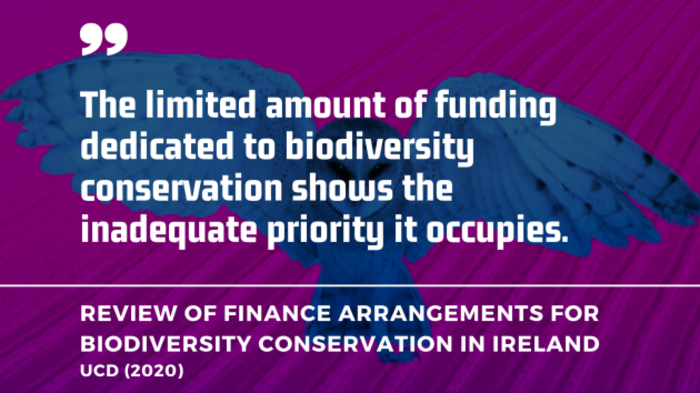
Role of NPWS severely hindered
In comparison to funding for agri-ecology schemes, the 2018 biodiversity expenditure review demonstrated that, between 2010 and 2015, the National Parks and Wildlife Service only received 10% of State biodiversity funding.
The additional 2020 UCD study presented the downside of these long-term funding gaps in stark terms, stating that the “chronically low budgetary allocation to state bodies responsible for biodiversity protection does not allow these organisations to fulfil their EU-mandated environmental objectives”.
According to biodiversity experts who spoke to Noteworthy, the level of funding received by the agency has to change, and fast, given the complex and wide-ranging role that it has, described recently in the Dáil as the “most important piece of the jigsaw” in pulling all of the different ecological strands together.
The agency, for example, provides the scientific evidence underpinning biodiversity protection in Ireland and reports on the status of habitats and species to the EU and UN.
It also has a wildlife crime enforcement role and a statutory role in assessing planning and licences applications which may impact on the natural world, as well as a myriad of other communications, administrative and funding roles.
The 2020 UCD report found, however, that the NPWS “receives inadequate financial support to conduct these activities” despite a recent funding bump from the new coalition Government involving the Green Party.
“The recent increase is well welcomed but it follows a period when the budget has been declining for many years,” said UCD’s Bullock. “Unless you have a fundamental amount of expenditure, you can’t get beyond just supporting the people and parts of NPWS in their jobs during their basic day to day activities.”
“If you really want to achieve biodiversity gain, the department needs more people on a permanent basis to be working on a greater range of activities because what we’re doing is really just standing still at the very best. The funding [the NPWS] is getting by on is really minimal.”
The NPWS itself identifies the issues in the terms of reference for an ongoing review of the agency that states its resourcing “remained severely challenged for a number of years after the 2008 – 2013 financial crisis” and that, relative to 2008, total funding in 2020 “still has a significant recovery to make”.
The NPWS has never once been under the same governance structure for 10 consecutive years, and has constantly shifted from one ministerial brief to the next, with prominent voices in the ecological and conservation network calling for a more stable position, including the Irish Wildlife Trust’s Pádraic Fogarty.
Speaking before an Oireachtas committee earlier this year, Fogarty said that the agency should be made independent to “build itself up again, communicate the science, tell Departments what needs to be done… all in the knowledge that its structure is not going to be shifted, moved or undermined after the next election cycle”.
The 2020 UCD financial review came to a similar conclusion, with co-author Dr Shane McGuinness telling Noteworthy that a key issue is how the agency has been “hollowed out for the last decade or more” to the point that it has to “outsource chunks of their work because they don’t have the internal capacity”. The NPWS review is ongoing.
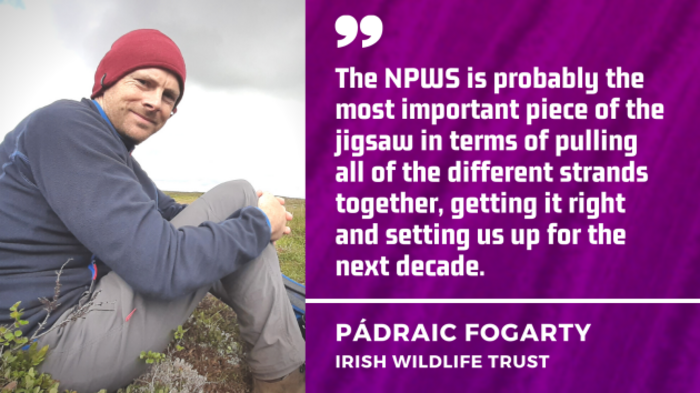
Other agencies facing difficulties
Another organisation that has an important role but lacks long-term stability is the National Biodiversity Data Centre (NBDC) that is responsible for a range of activities on top of its key role as collator and disseminator of biodiversity data in Ireland.
Established in 2006, it is also responsible for the All-Ireland Pollinator Plan, roundly lauded as a success story in mainstreaming the protection of bees and butterflies across a range of sectors.
Despite its title and role as the national node for biodiversity data, the NBDC is actually operated by an outsourced private company that has operated under short-year service agreement contracts awarded by the Heritage Council. The current contract is set to expire at the end of 2022, at which time another tender process will be run.
Speaking before the Joint Oireachtas Committee on Climate Action in May 2021, the Director of the Centre Dr Liam Lysaght said a key impact of this situation is that staff have a “short-term perspective” as they are consistently on short contracts.
“It is an insecure time for the staff of the data centre and we hope that by the end of next year there will be a more positive and secure future for us,” he said. The Heritage Council has established a task force to identify the best model to make the centre a more secure entity that Lysaght identified as a “very positive step”.
The National Biodiversity Forum has also called for the centre “to be strengthened and expanded to establish biodiversity monitoring as a long-term national priority and protect it from electoral cycles and changing political agendas”.
In a statement, the Heritage Council said it agreed that, while having the advantage of not formally committing the exchequer to open-ended financial obligations to support the NBDC, the service-level contract model “has considerable drawbacks”.
The most noticeable issue, it said, is that the model is a “a short-term mechanism for a service which requires long-term planning” and does not allow the centre to establish as a legal entity with governance responsibilities such as sourcing additional funding for its work.
“This service requires a structure which consolidates its position on a permanent basis and has the flexibility and authority to realise its full potential,” the council said.
The work of the task force is on-going and it is expected to make recommendations on the future structure of the NBDC in late 2021 or early 2022.
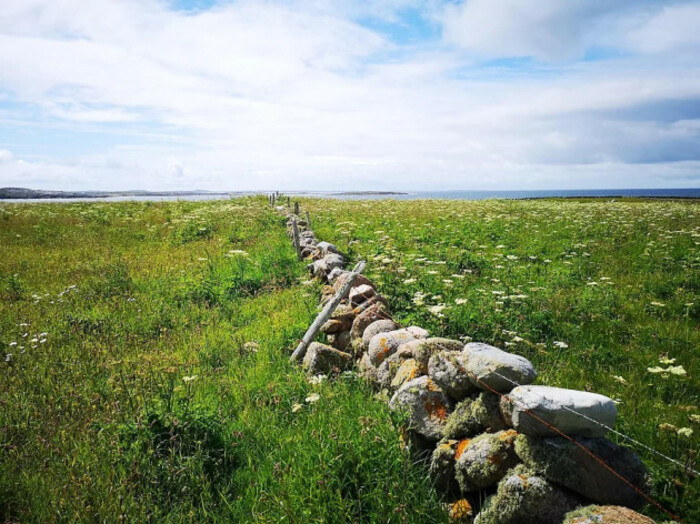 Example of high nature value farmland that can help support species like Corncrake
Example of high nature value farmland that can help support species like Corncrake
Results-based model – the way forward
Another solution offered up by biodiversity experts is a landslide shift in agri-environmental funding from a prescriptive model based on actions rather than outcomes to a measurable, results-based approach to protect a range of iconic species traditionally associated with farmland but now under threat from agricultural intensification.
According to a comprehensive State report to the UN in 2019, the shift to a more intense monocultural grass-based model has influenced a decline in various species, including birds, bees, butterflies and insects impacted by “the drive to ever higher levels of productivity” characterised by a “loss or neglect of hedgerows, farmland edges and scrub”.
Results-based models require a lot of early work such as developing scoring cards to assess habitat quality, setting up knowledge exchange groups for farmers, embedded community engagement and scientific research. But there is a huge appetite for them, according to John Carey of the novel results-based Corncrake LIFE project.
“Farmers regard results-based payment systems as fair and equitable,” Carey said. “It’s a paradigm shift to put the farmer back in charge of their own destiny rather than just prescribing actions for them to follow.”
The five-year project running from 2020 to 2024 seeks to protect the ground-nesting corncrake, the decline of which is closely linked to changes in farming methods such as the move away from hay-making to silage, drainage of damp ground for grassland, and reseeding of mixed-species grasslands with more productive grasses.
According to Carey, the species’ decline is “symptomatic of a rapid change in land use” across Ireland. “They have literally been pushed to the edge of their range. If the corncrake disappears, along with them will go a myriad of lesser known species that inhabit the same ecological niches.”
Under the project, there will be direct conservation work on around 1,000 hectares of land to address these pressures and enhance the habitat, including predator risk management and the re-establishment of traditional farming practices, with the ultimate aim to help boost the species population by 20% by 2024.
“What we hope to build is not just habitat, but the knowledge and skills to create and maintain the habitat and ensure the best possible outcome for both the birds and the landowners who conserve them,” Carey said.
“There is a sense among the communities of the importance of protecting the integrity of local areas while seeking to create a sustainable future for families. Finding these synergies is the key to conservation success, and we are lucky that so many of the local communities are engaged with us on this already.”
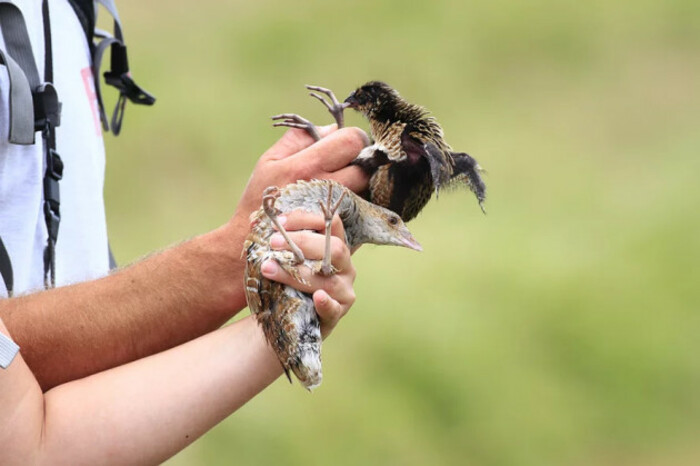 Corncrake being handled by members of Corncrake LIFE team
Corncrake being handled by members of Corncrake LIFE team
More funded needed to make a real difference
Although “heavy on admin costs”, UCD’s Shane McGuinness said that such results-based models are “effective” as they focus on tangible targets “where you can actually see the 10% increase in hedgerows” or “the five metre margins around your fields”.
Ireland is looked at “in terms of a lighthouse” for this model due to the early success of the Burren LIFE project in the mid-2000s, according to McGuinness, the first major farming for conservation project in the EU.
Unfortunately, he said, results-based schemes still make up “only a tiny fragment” of agricultural supports to date.
“The rest of the EU look at the Burren and say ‘that’s fantastic’ but that is a drop in the ocean in Ireland. That’s shown in our rivers. It’s shown in our corncrakes, our curlews, our marsh fritillaries and pearl mussels.”
According to the 2020 UCD study that McGuinness co-authored, this problem is linked to the under-resourcing of the NPWS. By failing to invest in the agency and “depriving it of capacity”, McGuinness said that the State is “preventing the acquisition of additional EU grants or the spending of existing EU allocations which are not fully claimed”.
This issue was further expanded upon by the UCD report’s other author, Dr Craig Bullock, together with NPWS staff, in a paper released earlier this year.
The paper found that restricted sources of finance have “trapped” the NPWS “in a cycle of continually fighting to survive while operating below the critical mass to be effective”.
This includes funding under the EU LIFE programme, according to McGuinness, that has funded many results-based projects to date, including the corncrake project.
“We’re involved in huge chunks of funding that are given over and we’re at risk of not spending those allocations. And this is millions of euros,” McGuinness said.
“So with a lot of these funds, they either go under-spent, under-claimed or over-administered, which is tragic, really, given how limited the funding is already for biodiversity.”
Data released by the Department of the Environment, that assists potential applicants with the process, shows Irish projects received €100 million in LIFE funding between 1992 and 2019. We have created a table here with details on all Irish projects.
While the use of indicative national allocations were only introduced in 2007 and subsequently discontinued in 2018, a Noteworthy analysis shows that Ireland underspent on its allocation by €12 million over a 10-year window between 2007 and 2017.
The Department said that these indicative allocations were “not intended to suggest secured funds or allocations per Member State” and that the quality of the project “was always considered the overarching criterion governing the project evaluation and award process”.
Another issue identified by experts tied to resource issues is the lack of accounting for natural capital in State plans and programmes.
Taking stock of our natural capital
It is estimated that more than half of the world’s economic output – US$44 trillion of economic value generation – is moderately or highly dependent on nature.
In 2008, the NPWS looked at the economic benefits of biodiversity in Ireland, putting the value of national ecosystem services at over €2.6 billion euro per year.
For example, pollinators contribute over €50 million to the Irish economy, while our natural, unspoilt environment was cited by 82% of visitors as an important reason for visiting Ireland in 2019, a year that brought in over €5 billion from overseas tourism.
Yet, according to the 2020 UCD biodiversity finance review, there is “only a modest acceptance by some departments of their dependence on natural capital”, even in those sectors with high dependency on these services.
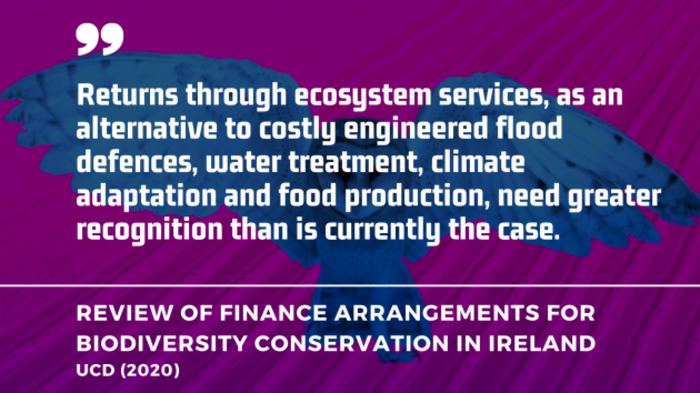
According to Trinity College Dublin ecologist Catherine Farrell, up until now, we “haven’t integrated nature into decision making at all” with policy moves based almost purely on economic metrics “without actually considering how we can work with the broader set of wealth that we have”.
“We need to bring out more knowledge of where the ecosystems are and what they’re doing. That is a powerful tool,” she said. “The tide lifts all boats [and] the tide for restoration should lift all habitats and all species because they’re all connected.”
Farrell is a member of the INCASE research team, a multi-disciplinary team funded by the EPA made up of specialists in ecology, economics, mapping, accounting and agriculture, working together to measure the positive contributions of our natural world.
This involves gathering data about the extent and condition of ecosystem stocks, the services and benefits they bring, and then aligning this detail with a system of national accounts to better integrate nature into the decision-making process.
Farrell said that there is “still a widespread lack of understanding” of how natural capital accounting works. “People think it just sticks a price on nature – which doesn’t have to happen at all”.
“If we don’t have a natural capital dashboard alongside other metrics such as health and economic trackers, we neglect to account for the key thing that underpins the success of all societal and economic targets – nature. Not tracking stocks and flows in nature has gotten us where we are [today],” she said.
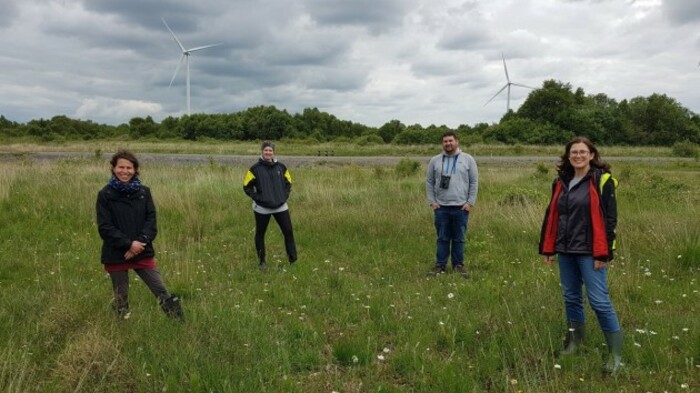 Catherine Farrell (l) on field research with other members of the INCASE team
Catherine Farrell (l) on field research with other members of the INCASE team
A lack of joined-up thinking
For example, in order to know the societal values generated by ecosystem services, we first need to know what condition the ecosystems are in, how they have changed or been altered over time, and the ways in which communities will benefit from their protection.
In the INCASE project’s study of the 18,000 hectare Dargle catchment released in April 2021, however, it stated that progress on ecosystem accounting remains limited.
“The challenges identified in this case study reflect those identified in other studies and include the lack of data… the absence of targeted and reliable time-series data on structure and function, as well as the need for agreed reference levels,” the study found.
A 2020 paper from the Royal Irish Academy on the value of Ireland’s agri-ecosystem services also found that there is still a lack of data for certain ecosystem services that can have knock-on impacts for conservation work.
A European Environment Agency (EEA) audit report released last year, for example, found that most conservation objectives for our network of protected nature areas are “too general and lacked quantification”.
A key factor in this, the agency said, is that there is still “insufficient ecological knowledge” for many habitats and species in Ireland.
“Such elementary knowledge gaps have knock-on effects not only on the assessment of favourable conservation status but on the entire management cycle and must be overcome urgently,” it warned.
While there is still a lot of work to be done, Farrell is confident that, with the right support to make natural capital accounting a centralised support tool, things can progress more rapidly.
“The more we use natural capital accounting, the better we will get at fine tuning the process and the data needs. We just need to get going,” she said.
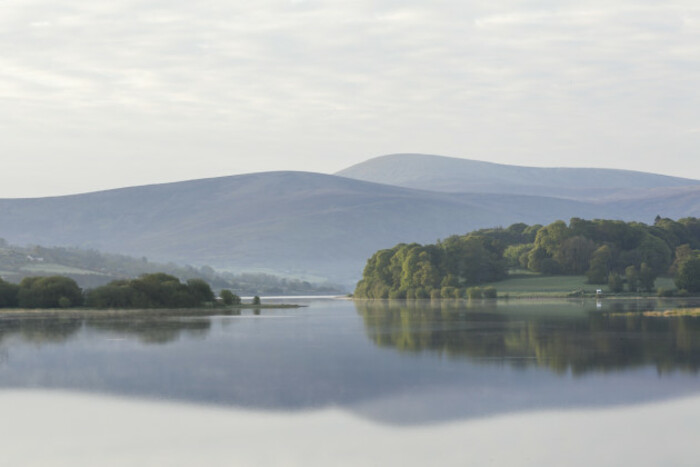 Blessington Lake, part of the Poulaphouca Reservoir SPA, a wetland habitat of importance for wildlife.
Blessington Lake, part of the Poulaphouca Reservoir SPA, a wetland habitat of importance for wildlife.
Change in future direction
The world is moving in this direction. In June, a Taskforce on Nature-related Financial Disclosures (TNFD) was launched to support a shift in global financial flows away from nature-negative outcomes and towards those with a positive role in supporting biodiversity.
The European Green Deal and the EU Biodiversity Strategy for 2030 are also clear on the need for natural capital accounting that is now firmly embedded across EU policies.
The State is also showing signs of progress with an ecosystem accounts unit set up in the Central Statistics Office last year, while we have also signed up to an OECD model to assess expenditure and revenue in line with biodiversity and climate goals.
The Department of Public Expenditure is also assessing all measures being considered as part of the review of the National Development Plan for their impact on a range of environmental outcomes, including biodiversity.
In addition, Ireland’s Recovery and Resilience Plan to reignite the economy in the wake of the pandemic uses a similar assessment to deal with climate and environmental concerns in a “more integrated fashion”.
The advice from the experts is clear, however, that we still have a lot to do, with the National Biodiversity Forum calling for the Government to “implement a step change in biodiversity funding” to restore and renew our natural world.
In its latest assessment report to the UN, the State acknowledged that the extent of damage to our pristine peatlands, species-rich grasslands and native woodlands is so considerable that “further investment is needed in habitat restoration and to provide connectivity to ensure resilience” into the future.
Work is ongoing at UCD to finalise a financial needs assessment to build on the two biodiversity finance reviews and provide a cost-effectiveness analysis of State policy to inform the State’s next biodiversity action plan due to come into effect in 2022.
While things won’t change overnight, UCD’s McGuinness is hopeful a corner can be turned in how we value our natural world that, to date, “has always been subsidiary, bolted on to the side if we have time, if we have the money, if the politics are there”.
“Now all of those things are in place – we’ve got the money, we’ve got the political power and we’ve got the public will – the Greta effect is there and the pester power at the kitchen table… We need to stop nibbling around the edges of this.”
—
In Part One, out yesterday, we examined the long-term failure of the State to protect important habitats and iconic species, such as hen harrier and curlew.
—

This investigation was carried out by Niall Sargent of Noteworthy. It was proposed and funded by you, our readers.
Noteworthy is the investigative journalism platform from The Journal. You can support our work by helping to fund one of our other investigation proposals or submitting an idea for a story. Click here to find out more >>
We also have a number of environmental investigation proposals which you can view here.






